The 50 States Project is a series of candid conversations with interior designers across the country about how they’ve built their businesses. This week, Sioux Falls, South Dakota–based designer Cassie Beech of Made With Grace + Grit tells us how she built a robust team of subcontractors rather than employees, why she looks for profit in her time billing rather than product sales, and why she’s not looking to build an empire—at least not yet.
You started your career worlds away from interior design. What was your path into the industry?
My dad owned a residential construction company for over 30 years, so I grew up on job sites, but I am a nurse by trade. I did a variety of roles in the field, including home health and hospice, for quite a few years. Looking back, it’s kind of funny that my primary patient care role was going into people’s homes. I’m very comfortable with going into homes now, so whenever my clients are like, “Oh, my gosh, it’s a mess,” I mean it when I say, “Don’t worry, I’ve seen it all. There’s nothing you can show me that would scare me.”
After that, I worked for an EMR [electronic medical record] software company for several years, which is where I really grew up professionally. I had three different roles in my time there, wore a ton of different hats, and learned a lot about project management. But when we had our youngest son, I started staying home and shifted my focus to home life. It was at that point that I really stumbled into design. I had started working on my own home, and then friends kept asking me the same questions. Because I’m an efficiency-oriented person—and because I was bored, if I’m honest—I started a blog [with the details about my projects] and would just send them the link. I never woke up and said, “I’m going to start an interior design firm.” I just kept having people come to me asking for help.
And then one day you realized you had a design business?
I ended up having a good friend whose designer kind of skipped out on them and wasn’t being responsive in the middle of a big renovation, and she asked, “Can you help us?” That was my first project in the industry. And then after the first two years, I looked up all of a sudden and I’m like, “I have a business.” It’s grown from there. For the first few years, I focused mostly on decor and furnishing—a lot more interior decorating than design. When my youngest son went to school four years ago, that’s when I really shifted gears to the new build and renovation side of things.
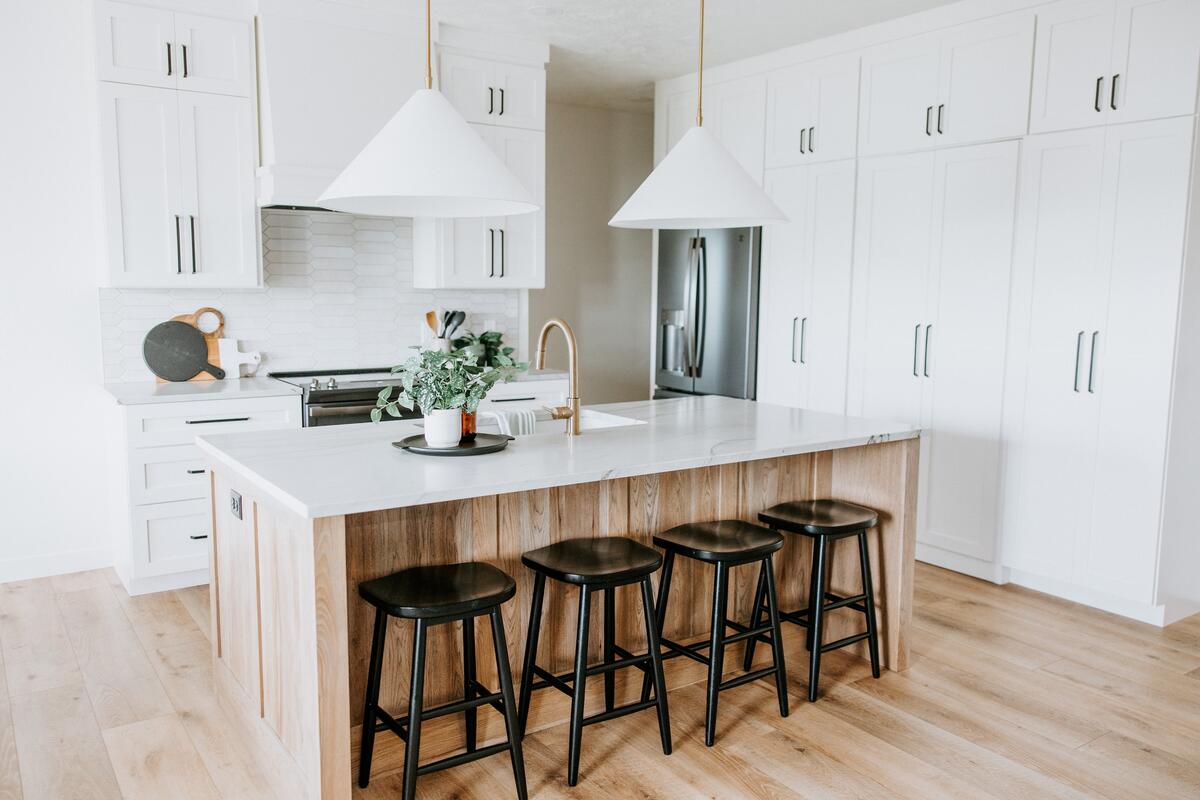
What were some of the early challenges of entrepreneurship for you?
Initially, it was getting over the hurdle of wearing all the hats. I’ve built out a small team of subcontractors, but even so, it’s a big adjustment [from] working for a corporation and being able to hand things off to other departments.
Where did you look for guidance on how a design firm should be run?
My role with the software company gave me a good leg up, because we came alongside these clinics and helped them learn how their business operates. I was able to take all that knowledge and apply it to [the design] industry. I also did several online courses and seminars—anything I could get my hands on that was free. From there, I ended up doing coaching with Nancy Ganzekaufer and Lesley Myrick, which helped me hammer out some of the back-end pieces of the business—billing was probably the biggest one. I did flat rate billing for a really long time; once I started working with Nancy, she helped me digest my numbers better and I got into hourly.
What made you change your mind?
Even when I interact with other designers, a lot of them go toward flat rates because it’s more comfortable, because they don’t have to track their time. And it can sometimes be an easier sell, because you’re able to say, “This is the cost.” However, once you spend time in this industry, you start to realize that no two projects are ever the same and that project scope is constantly creeping. I love the freedom that billing hourly has provided me. I always give anticipated hours at the front end of the project, but I’m not constantly going back and rescoping or sending new proposals. When the scope changes, I’m able to say, “Yep, absolutely, we can do that. We can add that to our plate, no problem.” That was one of the biggest changes I made, and after that, I saw my business take off.
The other thing I took from coaching was that before, I was hesitant to offer trade furniture. It took me a while to find a reputable receiver in our area, and it added a lot on the administrative side that I don’t necessarily love, but it did [change my firm’s finances]. Though, I think that when firms rely solely on [profit from product], that is where they sometimes get compromised. It’s like icing on the cake for me, but it is not the bread and butter of my business.
How much of your profit comes from design hours?
Probably 80 to 90 percent.
And how do you approach your markup?
I charge a fair industry rate for anything that is not retail. But like I said, I think that’s probably what differs from firms that really bank a lot of their income from those costs. It’s too easy to be shopped in the world that we live in—I mean, even if it is a trade source, there are so many ways to get shopped, and it’s hard to be competitive with some of these huge online retailers.
How do you talk to your clients about what design should cost—and what home furnishings should cost?
I start those conversations very early. In our process, everyone starts with a complimentary discovery call, and that’s where I start asking, “How much do you plan to invest in your space?” Nine times out of 10, they don’t know.
We spend the first 90 minutes of our consult walking or talking through the project, and then the last 30 minutes talking about the project’s scope and investment plan. That’s where I start to gauge our team’s level of involvement on the project, and I’ll throw out some numbers of similar projects. After the consult, I step away and really digest [what I’ve heard], then put my numbers behind it and send the client an initial proposal. It has everything from the services scoped and an estimated number of hours divided out by project component and phase to any materials or furnishings sourced by our team. I don’t put numbers behind anything contractor-related, but from the very early days of the project, they know what the investment will be for the things that are directly on my plate.
I always tell them, “I know that looking at these numbers feels like you’re swallowing the whole elephant, but we can always change the scope of the project.” I explain that I will never change my rate, but we can change the scale or materials. I know that it’s sometimes frowned upon by other designers—and if I can, I do want to do it all—but if I feel like the client is a good fit for me personality-wise, I’m OK with pulling some things off of my plate as long as there’s enough there to make it worthwhile.
How are you assessing what’s worth it these days?
We’ve gotten to a point where we don’t typically do anything less than 100 hours.
If someone does need to pull back, what do those conversations look like?
I start a lot of conversations by explaining that the industry has changed dramatically—that [product and materials] prices have gone up and quality has gone down. A big part of it, though, is gauging what they want and expect, and then educating them [on what’s reasonable]. I think that education is one of our biggest roles. If I want them to buy a sofa that’s $8,000 and they think they should buy one for $2,000, it’s my job to explain the difference between a $2,000 sofa and an $8,000 one. If, at the end of the day, they decide they’re more comfortable with the $2,000 sofa, that’s OK with me as long as I know they’re making an educated decision. It’s their money, you know?
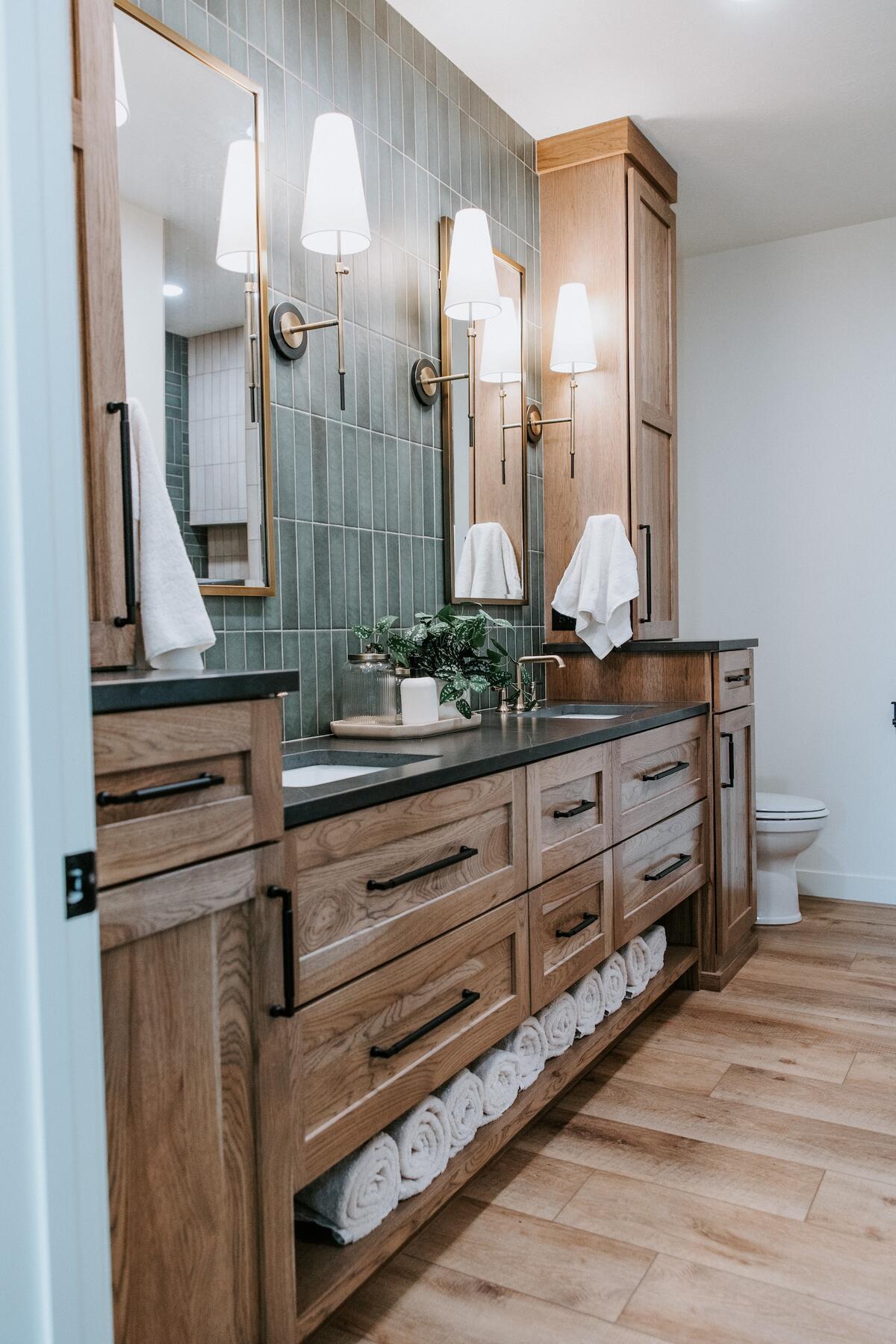
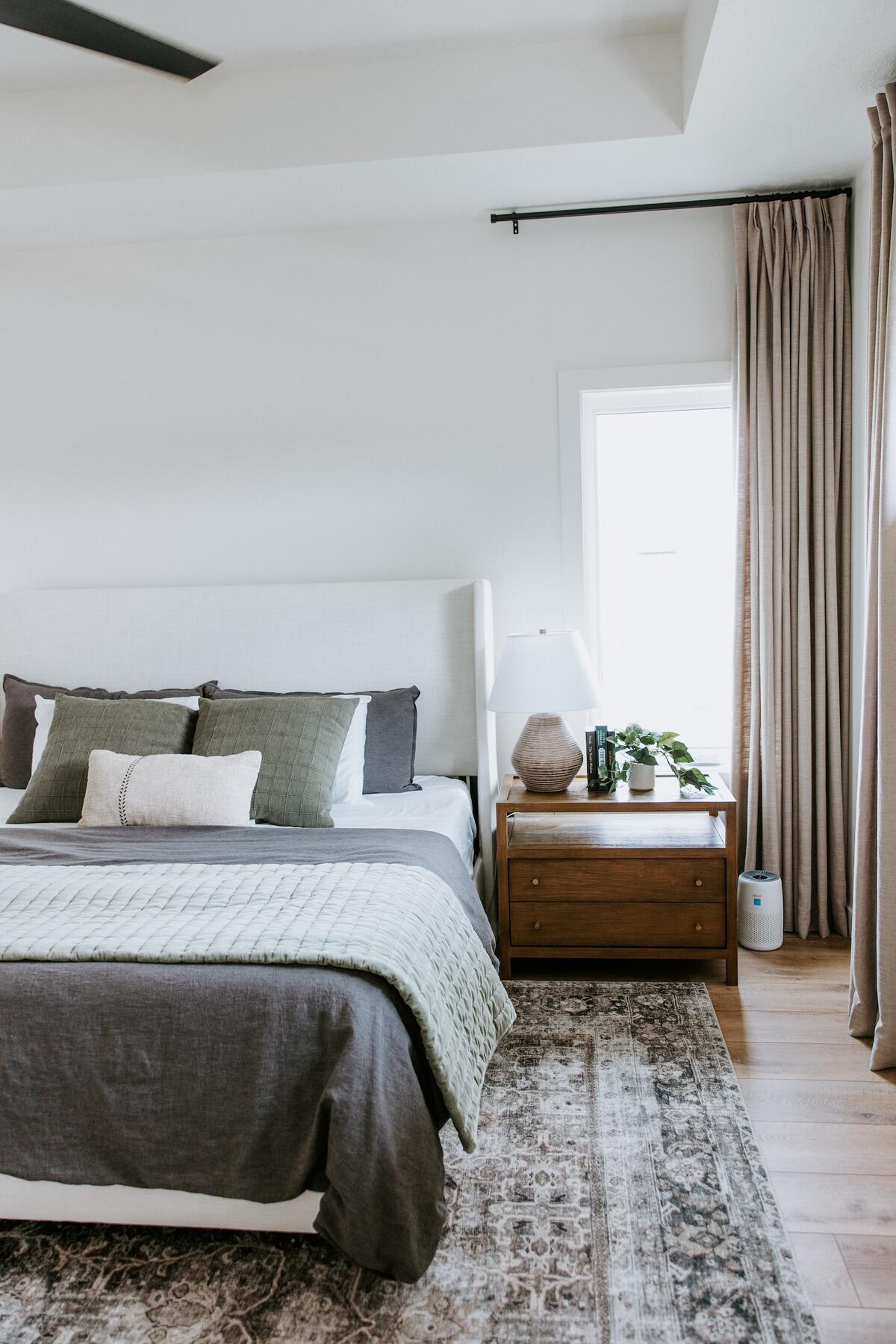
How does your location in South Dakota impact the kind of opportunities that come your way?
I lovingly call the Midwest the “design desert.” It’s like: What is trending? Copy and paste. If they don’t have a designer, they’re just going to copy and paste what everyone else is doing, because they don’t know. It’s a unique challenge to our region, but if you know how to sell it, it really is actually a big selling point. I talk to my clients about “the gray era” or “the honey oak era”—there are plenty of homes around here that people are really over because they were built with finishes that weren’t timeless.
Maybe because of my background, I approach [the sourcing process] a little bit differently: I see our homes as spaces that serve us, but they’re also a financial investment. Most people can’t do a complete gut job every five to 10 years—they want to love it for a good long time. So I always caution clients that, especially with our current culture, we are inundated with trends. When you go shopping at a store, it’s trends. You go on social media, it’s trends. My role is to help them digest and dig into what their design style is, so they’re not just [repeating] what they see and saying that’s their style. What did they love 10 years ago that they’re going to love in another 10 years?
I also help them understand where we can have fun. Maybe it’s accent tile, since it’s much easier to swap out a backsplash than to gut your cabinets. There are places where you might want to take bigger risks or pop some trendy things in, but when it comes to the bones, I typically encourage going with a style that they’re going to love for a long time.
What does that mean for your firm’s output aesthetically? Do you see yourself in it, or do you see yourself as more of a facilitator of the client’s aesthetic?
I see myself more as a facilitator. There’s definitely the Cassie touch that goes on it, but my goal is to make it reflect what they couldn’t do on their own. And it’s fun for me, because if I were only doing my style, it wouldn’t stretch me creatively.
Being self-taught in this field, what have your biggest hurdles been?
I struggled initially with imposter syndrome. I kept thinking, “I didn’t go to school for this. I’m not traditionally trained.” However, as I’ve really dug in over the last several years, I’ve learned that most of the designers in my region haven’t gone to school for design either—and that a lot of the schools in our area are geared toward commercial design, so even designers who have been educated aren’t necessarily equipped for residential.
They can build you an office tower or a hospital or a hotel.
Yes, exactly, and that’s the vein of the industry I’ve never had any interest in. The way I’m wired, I like the emotional aspect of residential design—of creating this cherished place for a family. And the beauty of the world we live in today is you can get more information from subject matter experts than even going to school sometimes. You can take courses online, go to seminars and conferences. I always seek out those experts who push me to the next level.
What has been the most informative source for you?
I went to High Point Market last year, and that really took it to the next level. I also do a lot of local networking, connecting with other business owners in my area at some women-in-business events. What I love about that is that a lot of these [entrepreneurs offering other] luxury services are serving the same clients. Some of them are Realtors; some of them sell products. I have a really good friend who does personal styling. There’s something to be said for networking with other businesses, because you can think outside the box—you can think differently about solutions versus looking at what everybody else is doing in the industry.
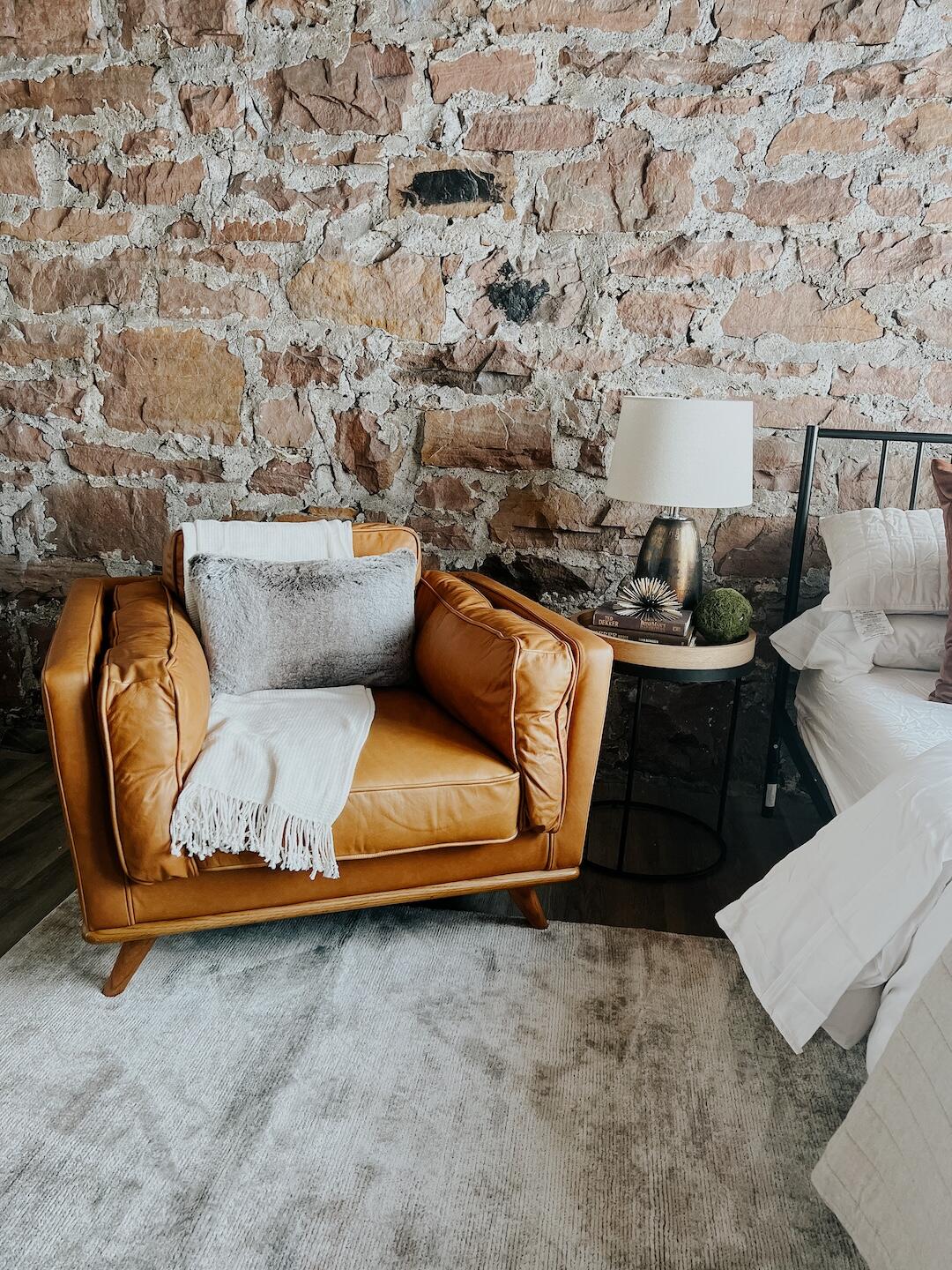

Are there things about the design industry that you feel like you’ve specifically rebelled against or ignored?
There [tends to be] a lot of pride in the design itself, and I get that, because I feel it too. There’s so much that tugs at your heart when you get to step back and you see that project that you’ve poured months or years into. But I think sometimes we lose sight that it’s not for us—it’s for the people who live there. So my goal has never been to be “magazine-worthy.” I mean, that’s great if it happens, but if the client doesn’t love it, that doesn’t do anything. My goal is to create a space for them.
I’ve been a part of conversations where other designers get really offended if a client wants to keep something that’s meaningful to them but it doesn’t fit the design. I’m working with a client right now who worked with a different designer previously, and what was selected doesn’t go with those pieces that are meaningful to her, so they stick out in the room like a sore thumb. I just had a conversation the other day where I said, “We’re probably going to have to get rid of some of these other items so that we can create an aesthetic that honors and elevates the pieces that mean the most to you.” It’s not the style I would have selected for me—and it wasn’t the style the other designer selected—but it’s about creating a space that honors what she loves. I think that’s what I enjoy most about it: For me, it’s about the individual relationships I develop with my clients rather than the accolades on the design side. That’s what lights me up.
That’s a refreshing perspective—to so fully put the client’s desires first.
And clients can sense it. I had a client who adopted a baby recently, and I was the first person she called. She was like, “I’m freaking out. I don’t know what to do. My office is currently in the nursery, so I need to move it, but I can’t tell anybody, and I need—” And I was like, “Take a breath. Babies actually don’t need a lot. You have time, it’s going to be OK.” I love that I’m the person they call when they have a big life change they know they can’t broadcast to the world, but they just need an ear.
They’ve already trusted you with so much.
Yes. Once you’ve been in their underwear drawer and dug under their couch cushions, you know all their dirty secrets.
Do you stay friends with clients, or is it mostly a professional relationship?
There are clients I’ve been working with almost since I’ve been in business, whether I’ve done multiple spaces or multiple homes. And along the way, you end up becoming part of their story. Even in my home health and hospice background, that’s what made me a good nurse: It was getting to know them and creating their care plan. It’s the same thing with designing—it’s just instead of a care plan, I’m creating a design plan.
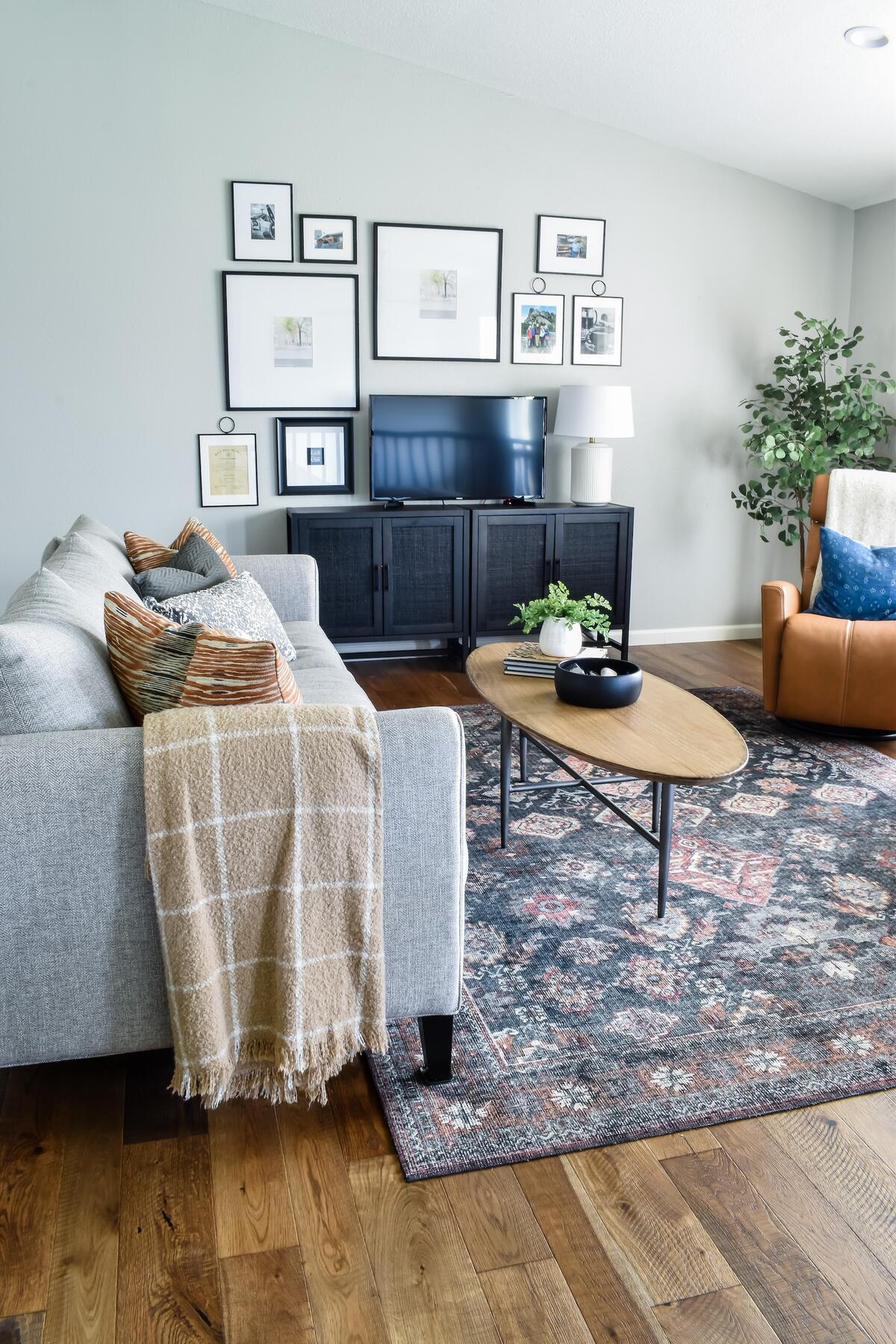

You developed a team of subcontractors rather than salaried employees. What does that support system look like?
I’ve decided to keep my team small at this season of life. I may scale someday, but my family is still such a focus for me that I prefer having a few key players that I sub consistently. Right now, it’s three other designers, and then a couple handymen who help with installs. The beauty of subbing is that we’ve all got skin in the game—especially with some of these designers who own businesses. They know the hurdles that you face [as a principal] so much better than an employee who isn’t able to see the whole picture. It also allows me to shrink and grow with business. The last few years have been like drinking from a fire hydrant, but I’ve been able to tag in some strategic players—and to be honest, if it didn’t work, tag them out too. It saved me from investing in someone that’s maybe long term not going to be a fit.
Has the pace of work slowed down, or do you still feel that sort of intensity?
I’m still feeling the intensity. I think it helps that we do full-service furnishings and a lot of designers in our area don’t. The industry ebbs and flows, so even as the renovations and new builds slow down, I see an uptick of people who are like, “We’re not really up for renovation right now, but if we’re going to stay here, then we need to make it better than what it is.” We’re booking into spring of next year right now, and we’ve consistently had more work than we know what to do with. I feel very, very fortunate about that.
What part of the work are you subbing out to those other designers?
Sometimes I’ll get a little help with plans or renders—I still oversee every aspect of the project, but I’ll have them take a first run at it. Especially for something like a new-build floor plan, I’ll give [the contract designer] my initial feedback, have them generate it in Chief Architect, and then go in and make my modifications.
It’s the same for other parts of the process too. I may have them take a first run at finish selections and pull options for me. I use software to create my spec sheets and digital visuals for clients, so even if I don’t have them do selections, I might have them pull all those products in there so that I have something to generate for the contractor. And I’ve learned not to do installs by myself, so I have a minimum of one [person to help me]. For our most recent install, we had four people on-site. And I have a gal who helps me with running returns and doing some of the admin stuff.
I’m just consistently checking in, like, “Hey, here’s a project that I’m working on. Would you have availability to jump in and help with this?” That type of thing. And it’s really helped, because then I can tag back in—I don’t want to completely sub out my favorite part of the job! I [still] do all the project management and anything client-facing.
When you look to the future, do you imagine the business growing and evolving?
I want to be able to scale my workload [to accommodate my family]. This summer, I took Fridays off and half days on Mondays. And I could do that. I’m not in this business to build an empire. I’m in this business to serve families, and serve my family.
One thing I’ve learned from networking with other interior designers is that just because you scale doesn’t mean you have more profit. In fact, you often have more overhead and more headaches. So I’m really enjoying this time where it’s a well-oiled machine. I know how to scale my projects. I know how to anticipate when I can kick off another one. I have ironed out so many things that I have no desire to try to make it anything other than what it is at this time. I just want to soak it up and still have the flexibility to kick off early and to be present for my family.
Long term, I love process development. I’m very strong on the tech side—another thing I’ve learned after networking with other designers is where my [unique] strengths are—so I eventually could see myself developing either a franchise or something that gives new designers the steps to get into this industry.
Like a business in a box.
Absolutely. This has the potential to be a very low-overhead, high-revenue-generating industry. There are so few businesses out there that have that kind of flexibility—where you don’t need a brick-and-mortar or that many bodies [to get started]. And whether it’s someone like me who’s totally cool with having a really small team, or somebody who wants to scale it, you can make it what you want.
What does success mean for you today?
It’s so easy for other people to look [at what you’re doing] and say you’re successful, but there have been many seasons in this walk that, even if it may have looked like it, that’s not how it felt [to me]. But I feel like the business has finally arrived at where I wanted it to be, and that is the ability to serve people I love, creating spaces that are important to them, but still having the opportunity to create a life for myself and my family. That’s what having a design business is all about for me: creating a space for life, but also making sure there’s room for me to have one too.
To learn more about Cassie Beech and Made With Grace + Wit, visit her website or find her on Instagram.





























